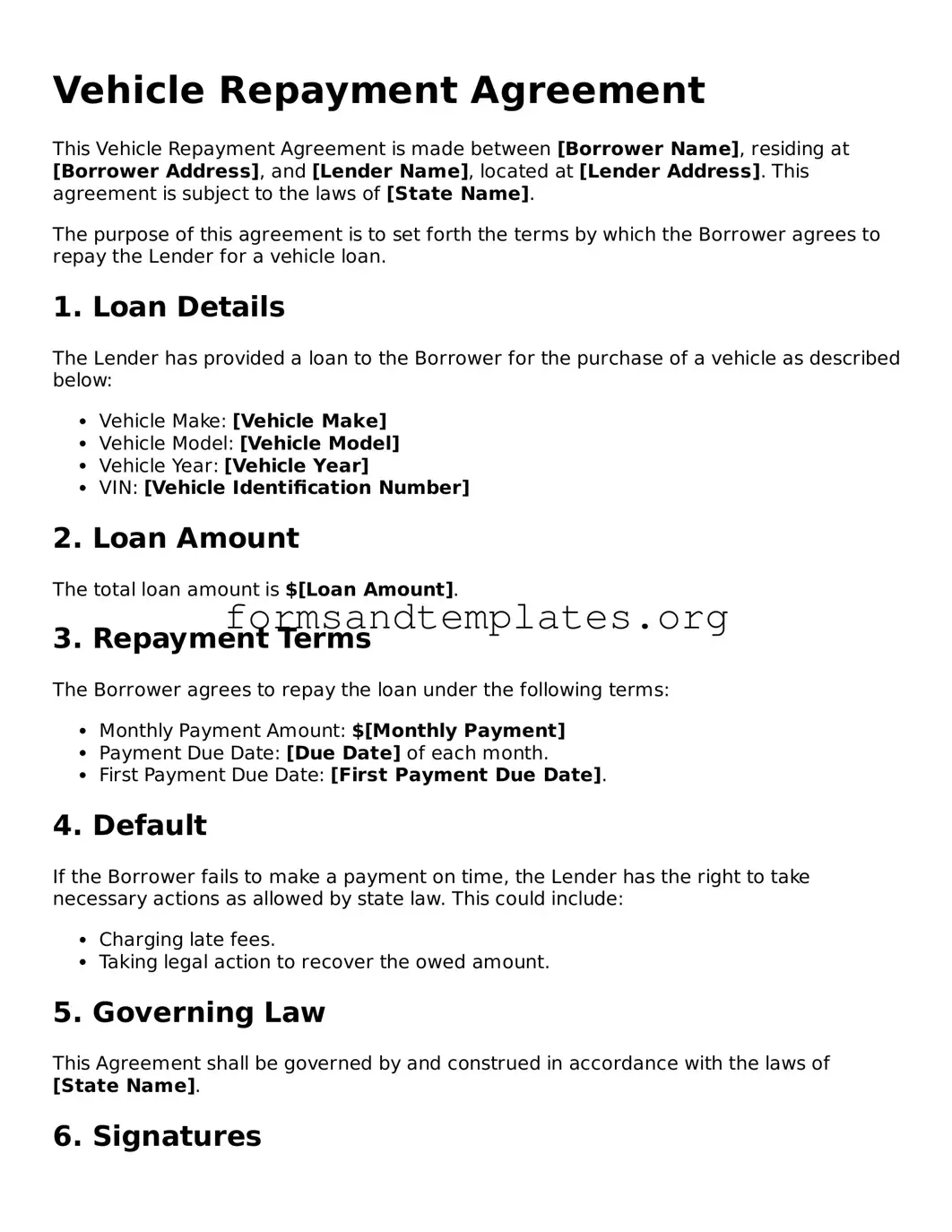A Vehicle Repayment Agreement form is a document that outlines the terms and conditions under which a borrower agrees to repay a loan used to purchase a vehicle. This form typically includes details such as the loan amount, interest rate, repayment schedule, and any penalties for late payments.
Anyone who is financing a vehicle purchase through a loan will need to complete a Vehicle Repayment Agreement form. This includes individuals, businesses, or organizations that are borrowing money to buy a vehicle.
The form generally requires the following information:
-
Borrower’s name and contact information
-
Lender’s name and contact information
-
Details of the vehicle being financed (make, model, VIN)
-
Loan amount
-
Interest rate
-
Repayment schedule (monthly, quarterly, etc.)
-
Any applicable fees or penalties
What happens if I miss a payment?
If a payment is missed, the lender may impose penalties as outlined in the agreement. This can include late fees or an increase in the interest rate. It is crucial to communicate with the lender as soon as possible to discuss options for making the payment or restructuring the loan.
Can I modify the terms of the agreement after signing?
Modifying the terms of the agreement is possible but typically requires the consent of both the borrower and the lender. Any changes should be documented in writing and signed by both parties to ensure clarity and enforceability.
Is the Vehicle Repayment Agreement legally binding?
Yes, once both parties sign the Vehicle Repayment Agreement form, it becomes a legally binding contract. This means that both the borrower and the lender are obligated to adhere to the terms outlined in the document.
What should I do if I want to refinance my vehicle loan?
To refinance your vehicle loan, you should first review your current agreement to understand any penalties for early repayment. Then, shop around for better loan terms and consult with your current lender about the refinancing process. Once you secure a new loan, you will need to complete a new Vehicle Repayment Agreement form.
Yes, the Vehicle Repayment Agreement form can be used for various types of vehicles, including cars, trucks, motorcycles, and recreational vehicles. However, ensure that the lender is aware of the specific type of vehicle being financed, as this may affect the terms of the loan.
If you have questions regarding the Vehicle Repayment Agreement form, it is advisable to reach out to the lender directly. They can provide clarification on specific terms and conditions. Additionally, consulting with a legal or financial advisor may help in understanding the implications of the agreement.
A Vehicle Repayment Agreement form can often be obtained from the lender, whether it is a bank, credit union, or dealership. Many lenders also provide the form online, allowing you to fill it out electronically or download it for printing.
